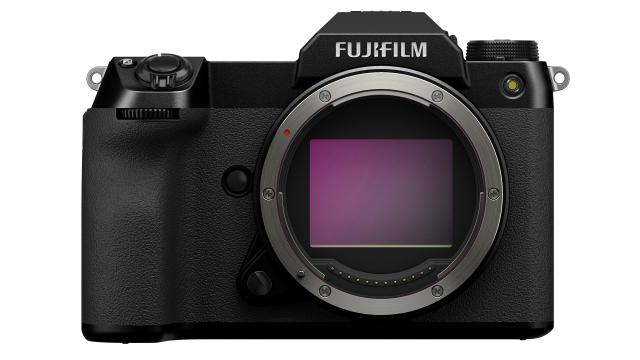Today at Fujifilm’s global X Summit, the company announced two new cameras including the new GFX 100S, which is the company’s most compact large format camera yet.
Weighing in at 1 kg, the GFX 100S is closer in size to a traditional DSLR than its bigger sibling, the standard GFX 100. However, despite having a body that’s 30 per cent smaller, the GFX 100S still has a huge 102-MP sensor along with a newly improved in-body image stabilisation system that delivers up to 6-stops of shake reduction.
As with so many of Fujifilm’s camera, the GFX 100S comes with 19 different film simulation filters including the brand new Nostalgic Neg. filter that looks to recreate the vermillion hues and amber highlights seen in photos from the 1970s.
Similar to its larger sibling, the GFX 100S features a monochrome e-ink screen up top with virtual dials, along with a new larger AF joystick, and a slightly redesigned control wheel on the left similar to what you get on the XF-10. Around the back there’s also a 3.2-inch vari-angle touchscreen that can be adjusted in three directions. And while the GFX 100S is primarily designed as a stills camera, it also support 4K video at up to 30 fps.
However, in order to make the GFX 100S so small, Fujifilm did have to make a some compromises like removing support for an optional battery grip. On the bright side, thanks to the use of a new NP-W235 battery, the GFX 100S should be able to shoot around 460 photos on a single charge, compared to around 400 for the standard GFX 100 (on a single battery).
Alternatively, if 100-MP is more than you really need, Fujifilm is also introducing the XE-4, which is sort of like a cross between an X100 and X-S10 but with no in-body stabilisation. Featuring a 26.1-MP sensor while weighing just 0 kg, Fujfilm says the XE-4 is the most compact camera that supports interchangeable lens the X-Series lineup.
Fujiflm claims the XE-4 should offer super-quick autofocus performance with support for both face and eye detection. However, for people looking for a flexible digital rangefinder with a few extra tricks, the X-E4’s most important feature might be its 3-inch rear display which can be flipped up 180-degrees so you can see it from the front and more easily record vlog-style videos.
And with support for 4K recording at 30 fps or full HD capture at up to 240 fps, users will have the flexibility to choose between higher resolution or faster recording speeds for better slow-mo.
Finally, in addition to the two new cameras, Fujifilm is also releasing three new lenses including a new 27mm f/2.8 pancake lens, an 80mm f/1.7 prime lens, and a 70-300mm f/4-5.6 telephoto lens.
Both cameras are expected to go on sale in the U.S. sometime in March, with the GFX 100S starting at $US6,000 ($7,745) (body only), and the X-E4 going for $US850 ($1,097) (body only) or $US1,050 ($1,355) as a kit with a 27mm f/4 lens.
Editor’s Note: Stay tuned for local Australian pricing and availability as it becomes available.
